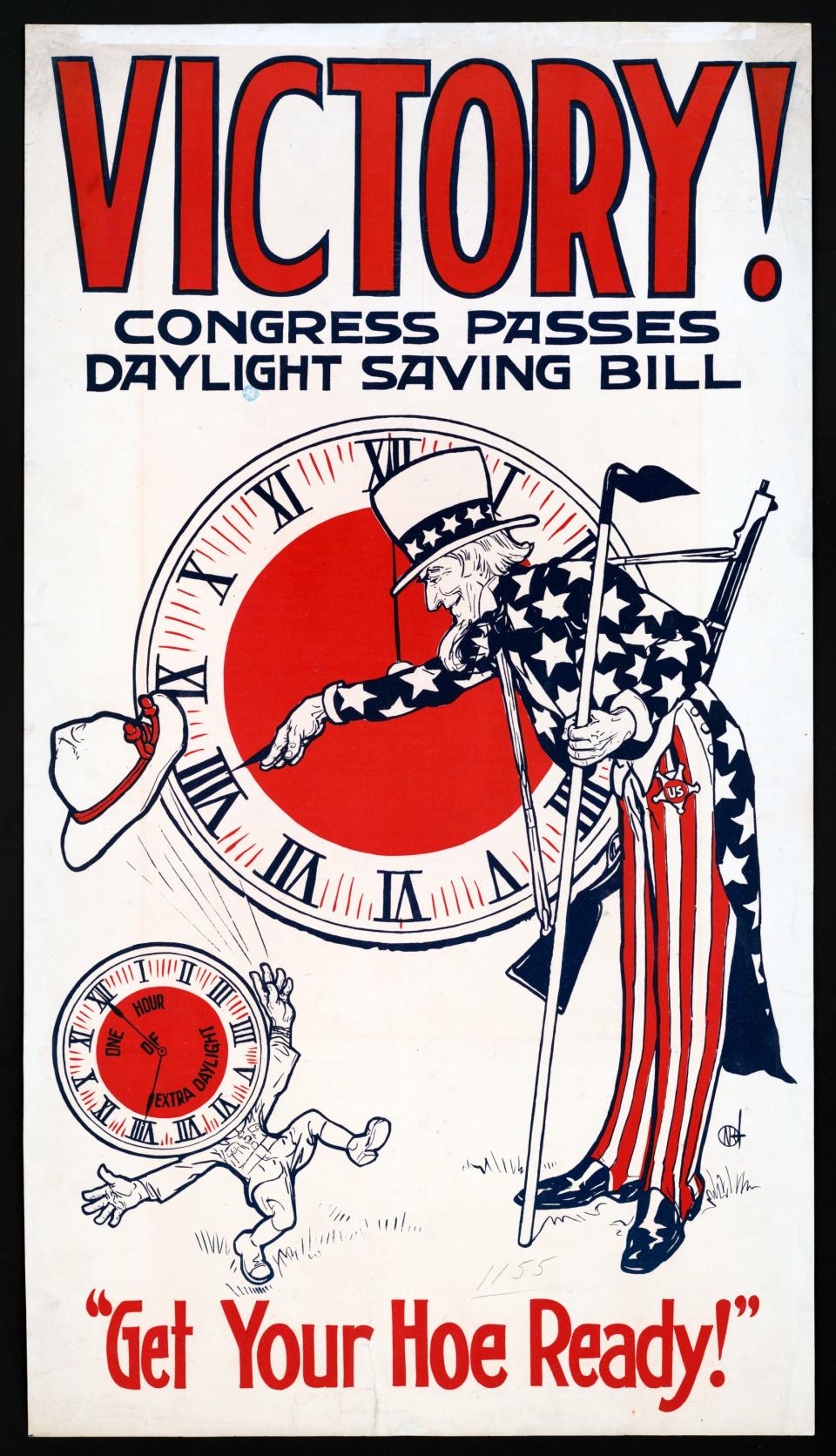When does Daylight Saving Time begin? Here's when to 'spring forward' in 2024
The twice-annual time change is nearly upon us, with millions of Americans gearing up to "spring forward."
Here's everything you need to know about the seasonal practice of daylight saving time, including when it begins, when it ends, its long history and more.
When does daylight saving time start in 2024?
Come springtime, clocks will "spring forward" one hour, causing individuals to lose an hour of sleep.
It's time, now, to start planning ahead for that lost hour.
Daylight saving time will begin at 3 a.m. local time on Sunday, March 10, 2024. As a result, both sunrise and sunset will occur about 1 hour later that day. Sunshine will be plentiful all summer long.
VALENTINE'S DAY: Sleepless in Seattle... in Baltimore? Eight great romantic comedies filmed in Maryland
When does daylight saving time end in 2024?

Then, come autumn, millions of Americans will be gifted extra time to sleep.
Clocks will "fall back" one hour at 2 a.m. local time on Sunday, Nov. 3, 2024, allowing individuals to gain an extra hour of sleep. That same day, both sunrise and sunset will occur about 1 hour earlier.
The latest business news: Salisbury welcomes Halal food truck, Princess Anne getting bakery | What's Going There
When did the practice of daylight saving time begin?
Congress officially passed the Uniform Time Act in 1966. This law implemented a uniform time and date for states to observe daylight saving time.
The time zones established by the Standard Time Act, as amended by the Uniform Time Act, are Atlantic, eastern, central, mountain, Pacific, Alaska, Hawaii–Aleutian, Samoa, and Chamorro, according to the U.S. Department of Transportation (DOT).

The DOT is in charge of daylight saving time and oversees all time zones within the U.S.
Only two states, Arizona and Hawaii, choose not to observe daylight saving time. both states stay on standard time year round. Likewise, U.S. territories Puerto Rico, American Samoa, Guam, the Northern Marianas, and the U.S. Virgin Islands do not observe daylight saving time.
PROFILE OF DEL. CHRIS ADAMS: Citizen legislator: Business owner Del. Adams leads Eastern Shore delegation's efforts
Daylight saving time once known as 'war time'

Daylight savings time is a seasonal practice that occurs in order to make better use of natural daylight. Each year, it begins on the second Sunday of March and ends on the first Sunday of November.
Daylight savings time was first introduced in the United States on March 19, 1918, under the Standard Time Act. However, it was initially referred to as "war time" — a nickname no longer in use today, Delmarva Now previously reported.
By adding an extra hour of sunlight to the day, this would, in turn, help the country save on energy costs during World War I, according to the U.S. Department of Defense. Yet, the law was only in effect for about a year and a half before it was repealed.
LATEST ON OFFSHORE WIND: Offshore wind: Latest updates on whale deaths, more after Ørsted pullback in Maryland
In February 1942, Congress implemented a law instating a national daylight savings time to help conserve fuel and promote national security and defense, hence the nickname "war time," reported the U.S. Department of Defense.
But, the law was once again repealed in 1945. For the next two decades, there were no set rules for daylight savings time, leading to much confusion across the country. It wasn't until 1966 that this changed.
Olivia Minzola covers communities on the Lower Shore. Contact her with tips and story ideas at ominzola@delmarvanow.com.
This article originally appeared on Salisbury Daily Times: Daylight Saving Time is near here again, and here's all to know

